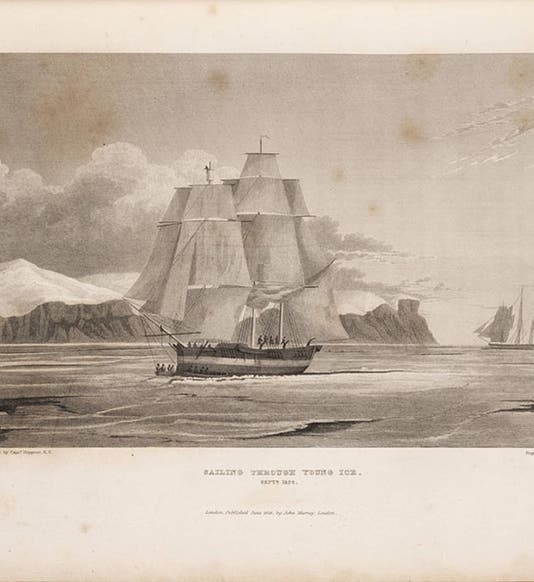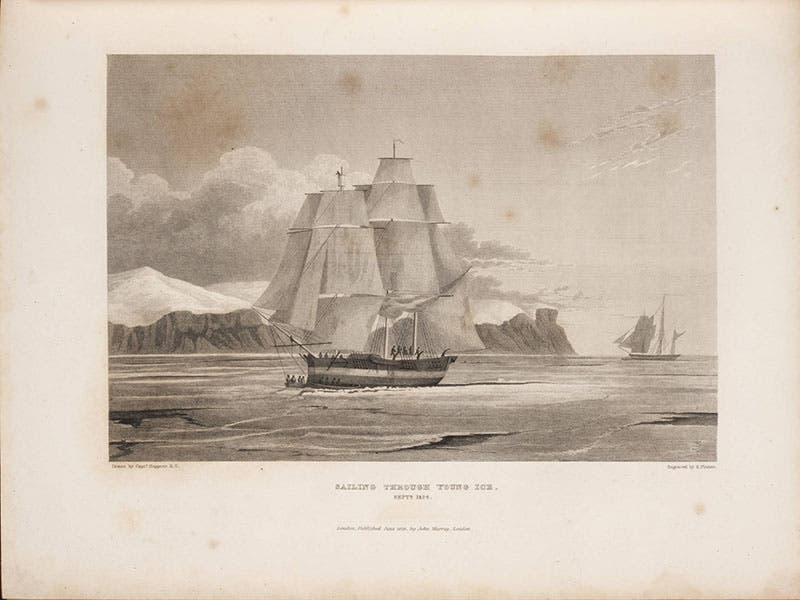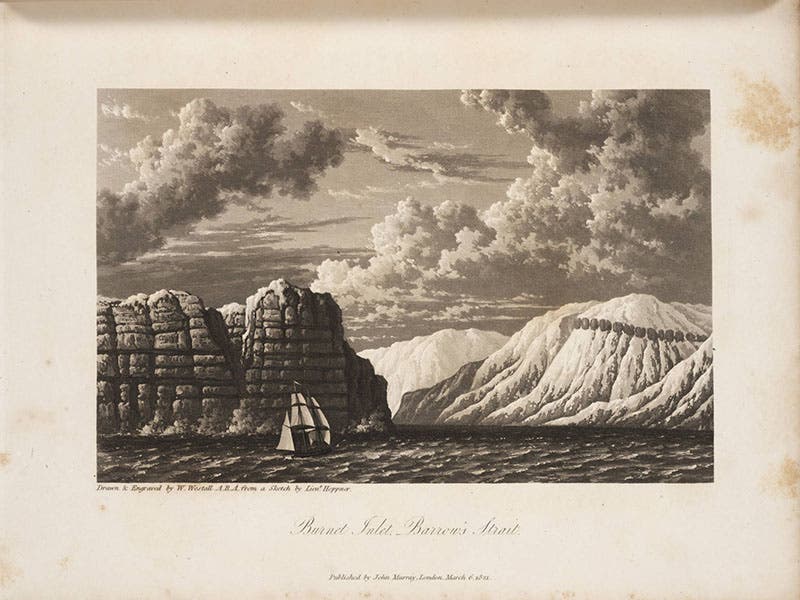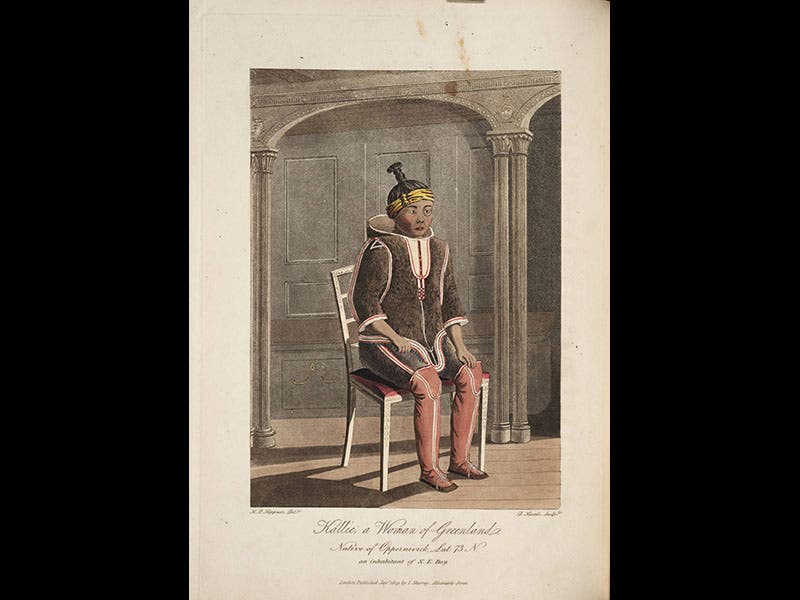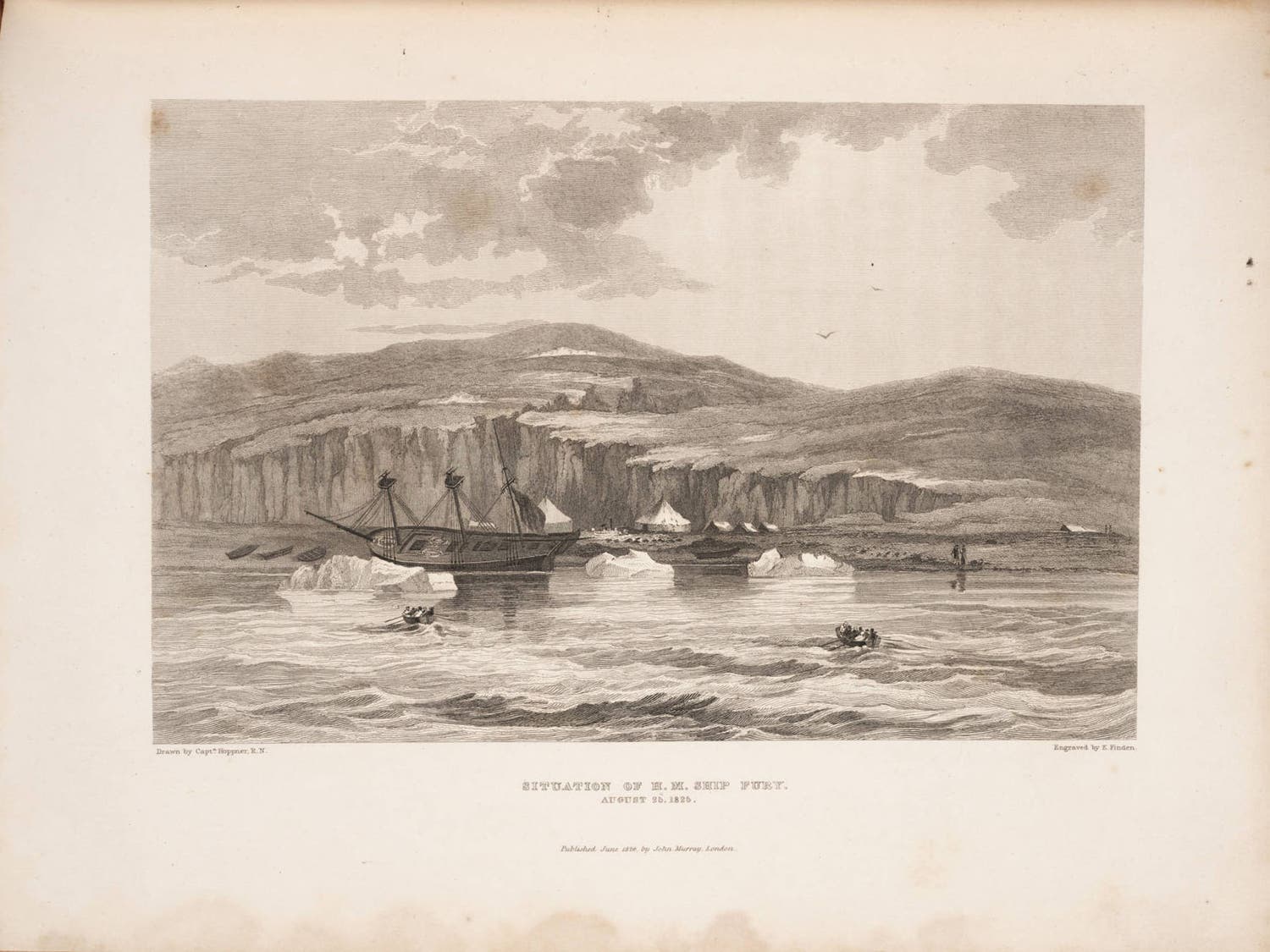Scientist of the Day - Henry Hoppner
Henry Parkyns Hoppner, an officer and artist in the British Royal Navy, died Dec. 22, 1833, at age 38. Hoppner went on four of the British voyages that attempted to find a Northwest Passage between 1818 and 1825, the last time as commander of his own ship, the HMS Fury. The Fury was one of a class of ships that the British Navy called bomb vessels; they were very broad and strong and were designed to inflict heavy mortar attacks on land-based fortifications. Bomb vessels were given fiery names, such as Erebus, Terror, Hecla, Vesuvius, as well as Fury. Since they were so robustly built, bomb vessels became the natural choice when the British ventured into ice-filled Arctic waters in 1818. On William Parry's third voyage to the Arctic, 1824-5, Parry commanded the Hecla and Hoppner the Fury. The made it partway through the Arctic archipelago but were beset by ice in a place called Prince Regent inlet. The Fury, unusually for a bomb vessel, succumbed to the crush of the ice floes and had to be abandoned on Somerset Island, at a place known, ever since, as Fury Beach. All of the ship’s stores were unloaded onto the beach, as the Fury’s crew crammed aboard the Hecla, and these tins of meat and biscuits proved to be the salvation for two future Arctic expeditions.
Hoppner might have been a better artist than he was a commander. He contributed sketches to several of the narratives by Parry and John Ross. We see above, in order, an image of the Hecla and Fury ‘Sailing through Young Ice”; a view of Barrow’s Strait from Parry’s first voyage in 1819-20; a drawing in color of a young Inuit woman, Kallie, whom the men of Ross’s first voyage encountered in Greenland in 1818; and a sketch of the Fury stranded on the beach that would bear her name. We displayed the latter plate, and one other, in our 2008 exhibition, Ice: A Victorian Romance.
Dr. William B. Ashworth, Jr., Consultant for the History of Science, Linda Hall Library and Associate Professor, Department of History, University of Missouri-Kansas City. Comments or corrections are welcome; please direct to ashworthw@umkc.edu.

